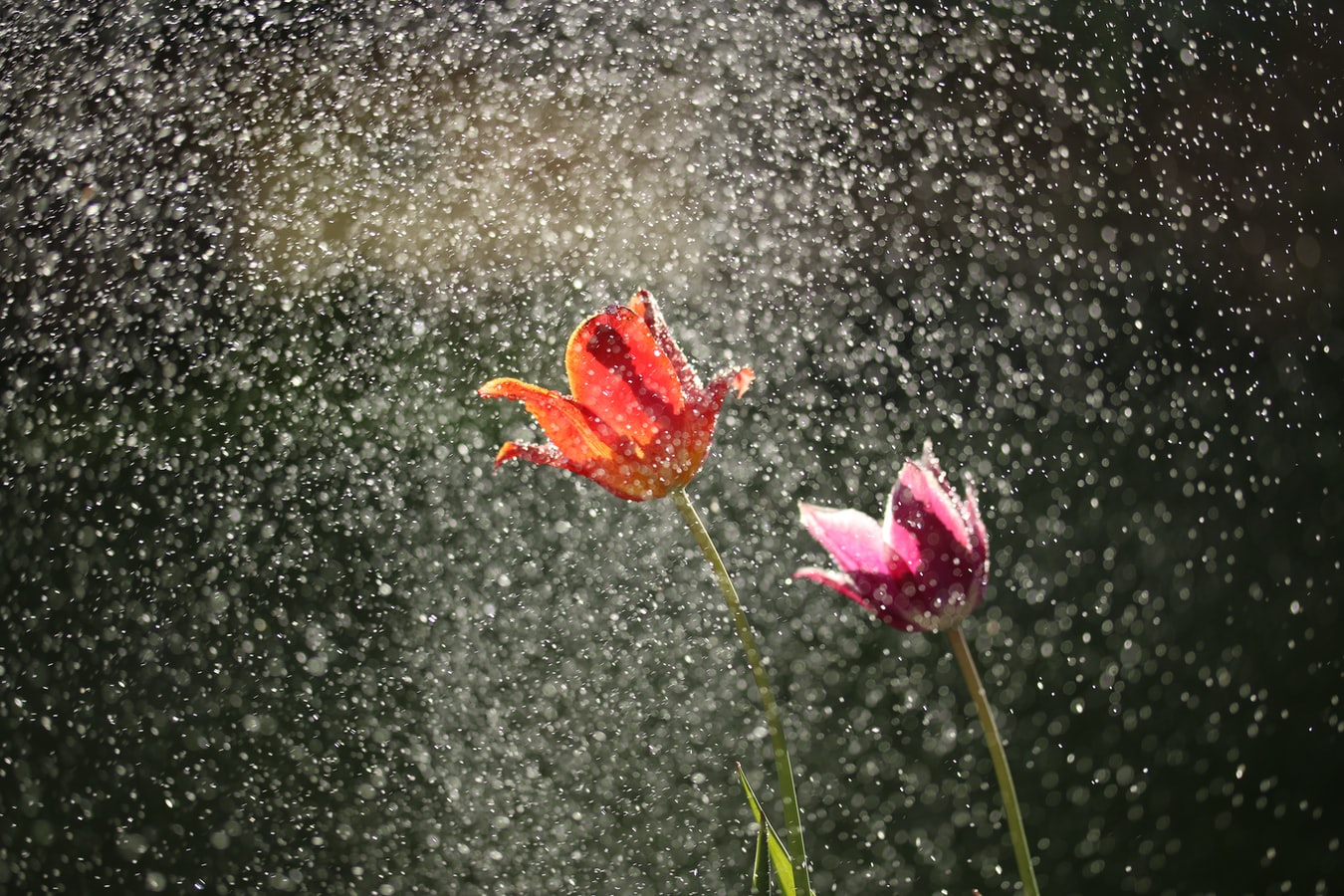Aceina
It's easy to know when it's going to rain; Aceina fly up and float, doing a little rain dance. My grandmother saw that her crops grew better after they were here, so she started planting things all about the farm. Some days the smells are a bit overpowering.
Basic Information
Anatomy
The species is small enough to be cupped within two hands, has two side wings for flight, one short tail wing to steer while flying, two legs ending in claws, and has hollow bones underneath a fairly flexible skin covered in short spikes (top only; the bottom coat is made of short breast feathers).
Since they are such a small size, during their "rain dance" they inflate themselves with extra air and will float among the raindrops.
Genetics and Reproduction
The female deposits the eggs into nests built by males or other females (aka the nestors) that wish to perform the male's reproduction duties. The female, after laying the eggs, becomes the provider and goes off to hunt for food to bring back to the nest while the nester protects the eggs against any who might cause harm.
Provider Role: gather food sources for the nest (mainly petals, but diets can also include small insects, spiders, snails, and fish fry)
Nestor Role: protect against egg thieves and rebuild the nest if needed (such as if a storm has passed)
Growth Rate & Stages
Eggs (usually a pale grey or yellow, possibly a mixture of the two) can number between 4-10, and many Aceina will have about 2-3 broods during their lifespan. Incubation takes about two weeks, and the chicks will remain in the nest for almost one month.
Ecology and Habitats
Aceina have the ability to live in any area that has blooms and flowers. As they grow older they tend to take on the coloring of the petals that they eat (which has led residents to feed the birds colors that they like).
An amazing feature of these little birds has been used by farmers for decades. On days which will rain, they will gorge themselves on petals around them, eating almost double their weight. As they eat, pollen covers their bodies and when they're full (or when the rain is released from the clouds) they will fly up into in and... float about in the rain, similar to living bubbles. The farmers realized that their crops grew much better when Aceina do their rain dance and have been planting flowers between their rows of crops.
Dietary Needs and Habits
Aceina eat mainly flower petals, but diets can also include small insects, spiders, snails, and fish fry. Most are still wild, but some beings have kept Aceina as pets (those animals living about five more years than they would in the wild).
Biological Cycle
Unlike many other animals, Aceina eggs are laid mid-winter and the chicks are ready to fly right before spring. They are most active in spring and summer, waiting until autumn before they store food for winters. Nests have been found in snowy areas but those are rare and no Aceina have been found in areas with frequent heavy rains (frequent light rains, yes).
Additional Information
Social Structure
Aceina flocks have at least 10 and can be up to 50 individuals - they are very social and do best with others around them. They chatter to each other in the mornings, before the sun has risen, and when light pours onto the earth they will sing of their findings to others.
Domestication
Aceina can be domesticated but the best methods haven't been discovered yet. However, as of this date, three things are needed.
- Other Aceina, at least one more
- Blossoms of the colors and textures they enjoy
- An area clear of danger or predators
Facial characteristics
Easily distinguished by having feathery wings and an underbelly while they have a different skin type (almost like a lizard) that is much more elastic from the back of the head down to their butt.
Geographic Origin and Distribution
Found almost anywhere, but will stay away from places without blooms, blossoms, or flowers. Light snow in winter is not a deterrent
Average Intelligence
Can be trained with short whistles or commands to do tricks; "Find color" is one they excel at and there was one Aceina who learned "shake." In the wild they've been observed showing each other where good flowers are and bringing petals to those who are too sick or injured to fly.
Perception and Sensory Capabilities
Hearing is the highest sense, followed by hearing, then sight, then touch, and finally smell.
Lifespan
10 years (in the wild; 15 years in captivity)
Conservation Status
The species is not under protection and no measures are being taken for its survival since they are numerous.
Average Weight
4-6 g
Average Length
7-8 cm
Body Tint, Colouring and Marking
Body tint can very; Aceina who eat cherry blossoms tend to be pink, those that eat jonquil petals have a yellow disposition, etc. Rare colouring is when they enjoy several differently coloured petals and markings are those colours blending in some areas and remaining vibrant in other sections.


Comments